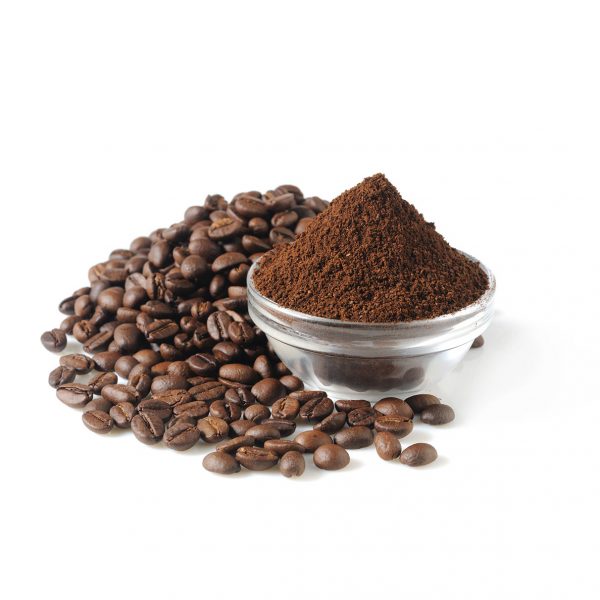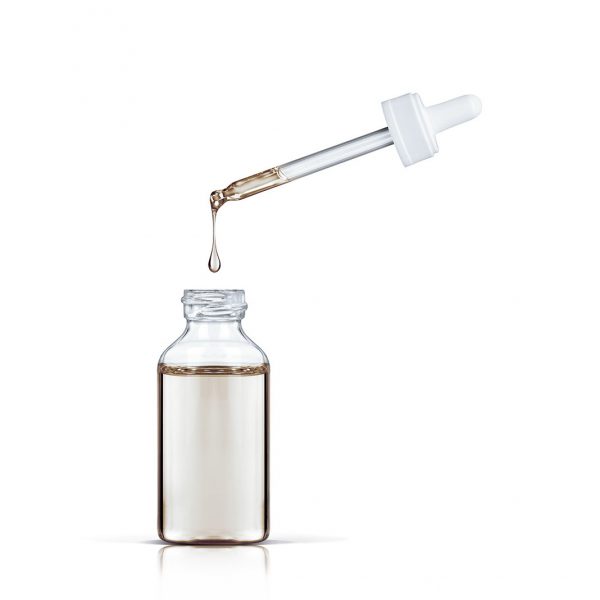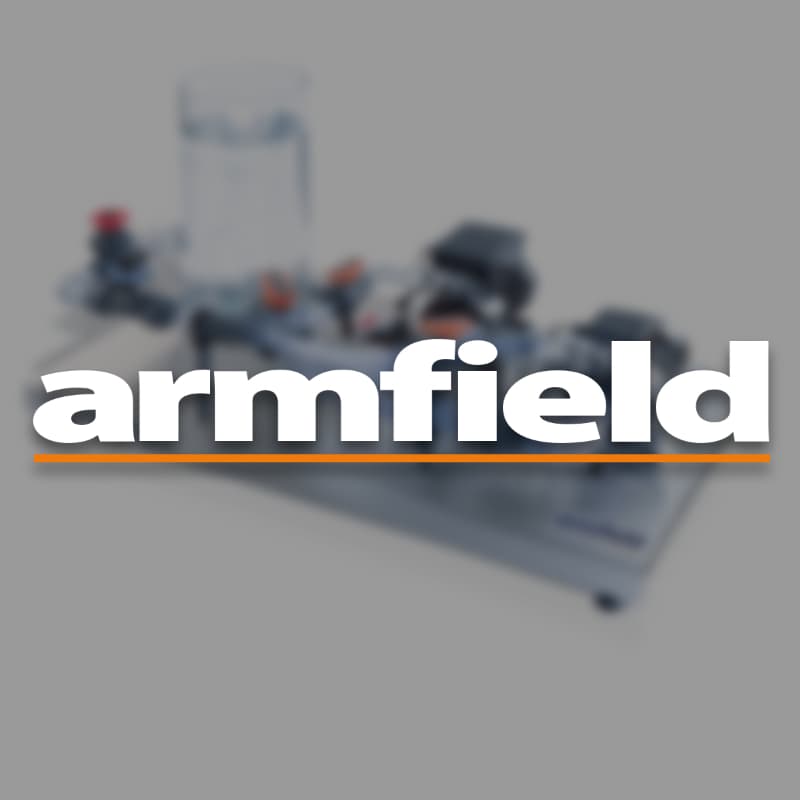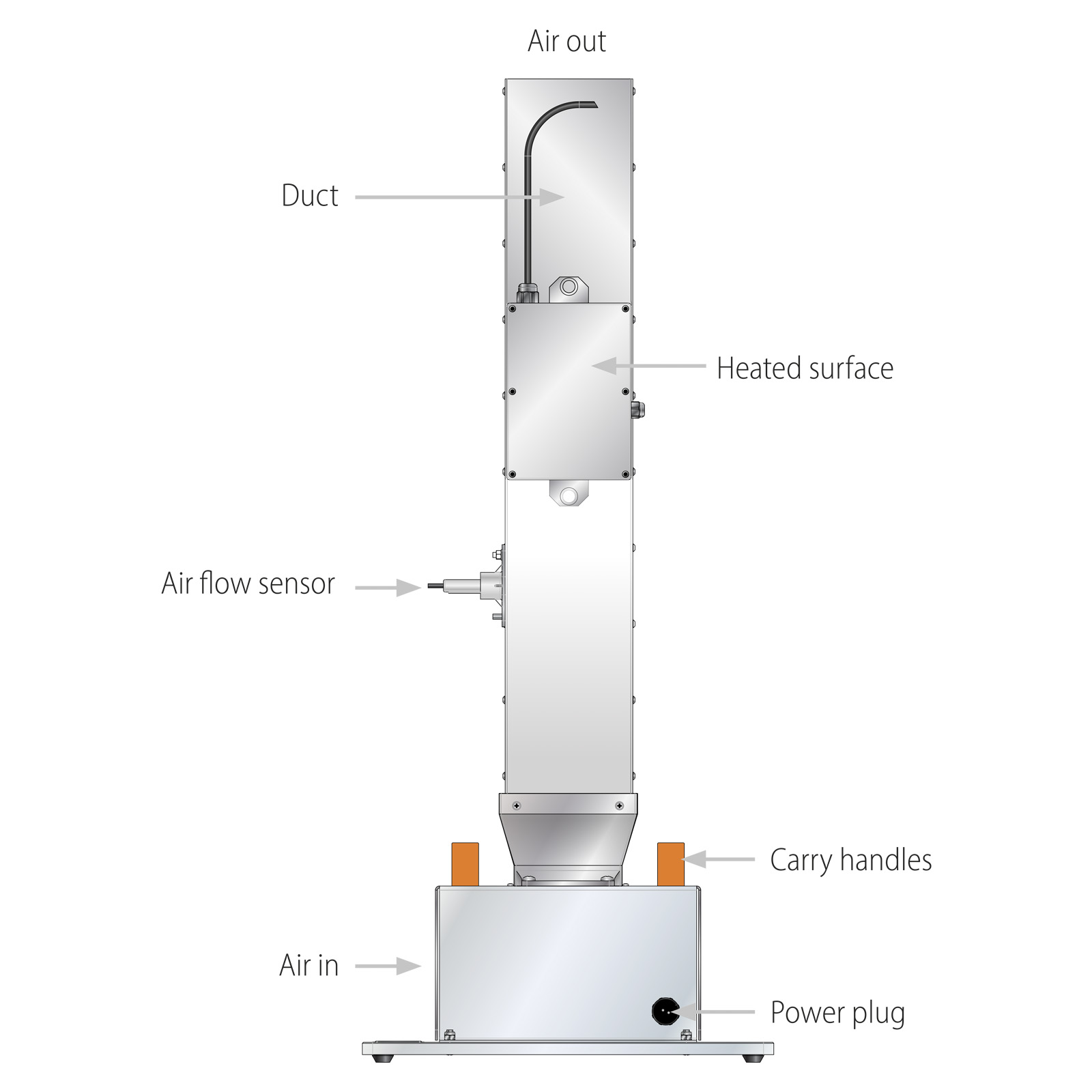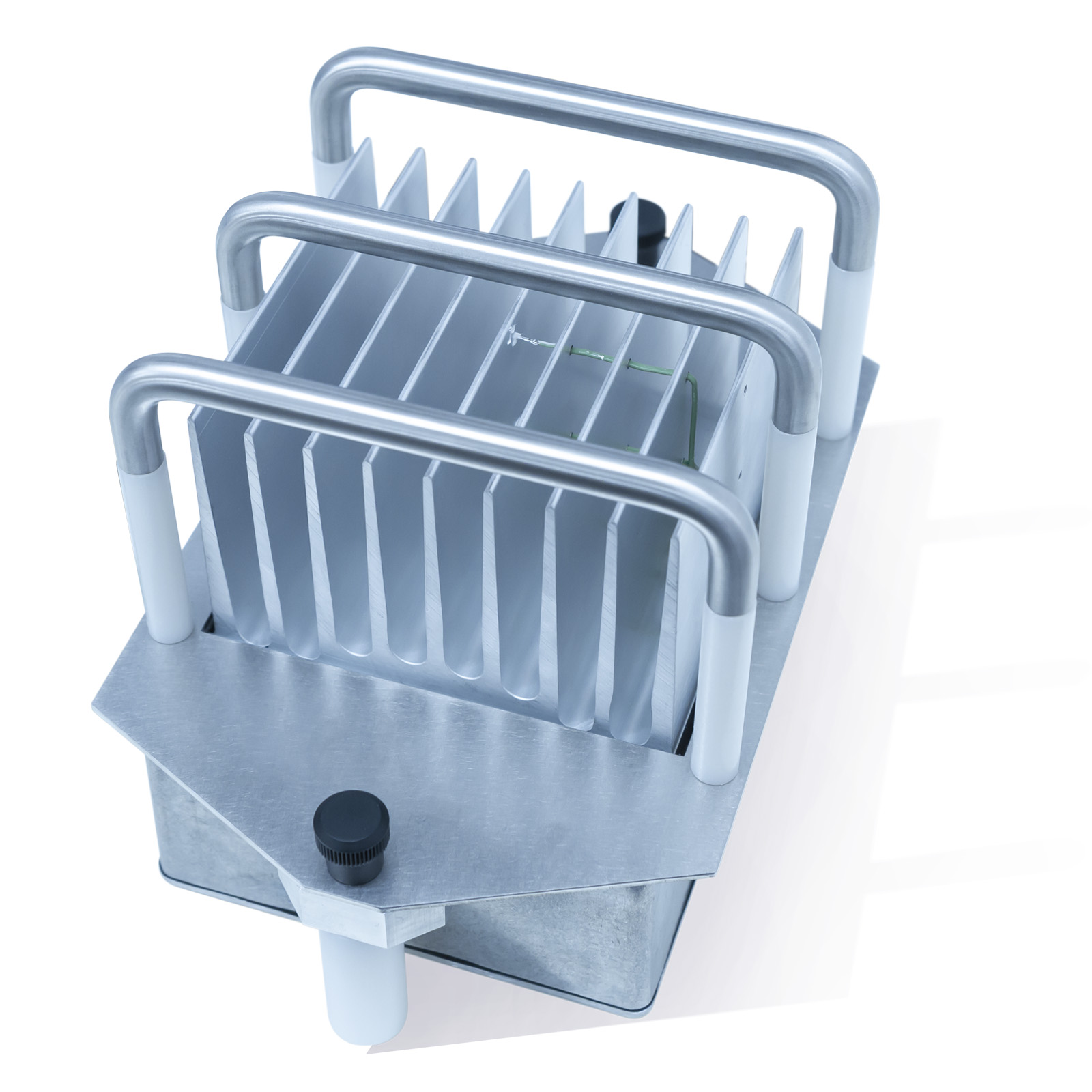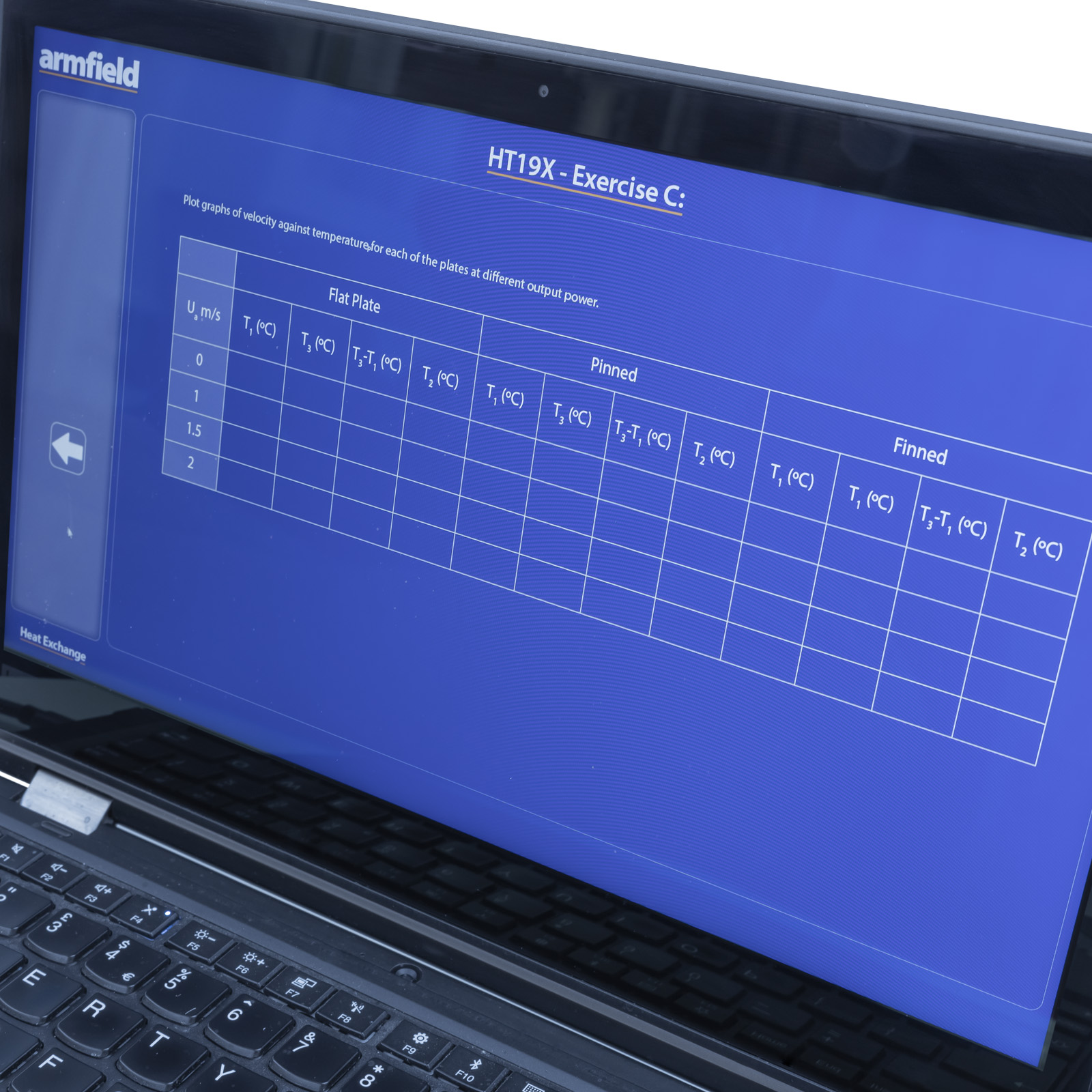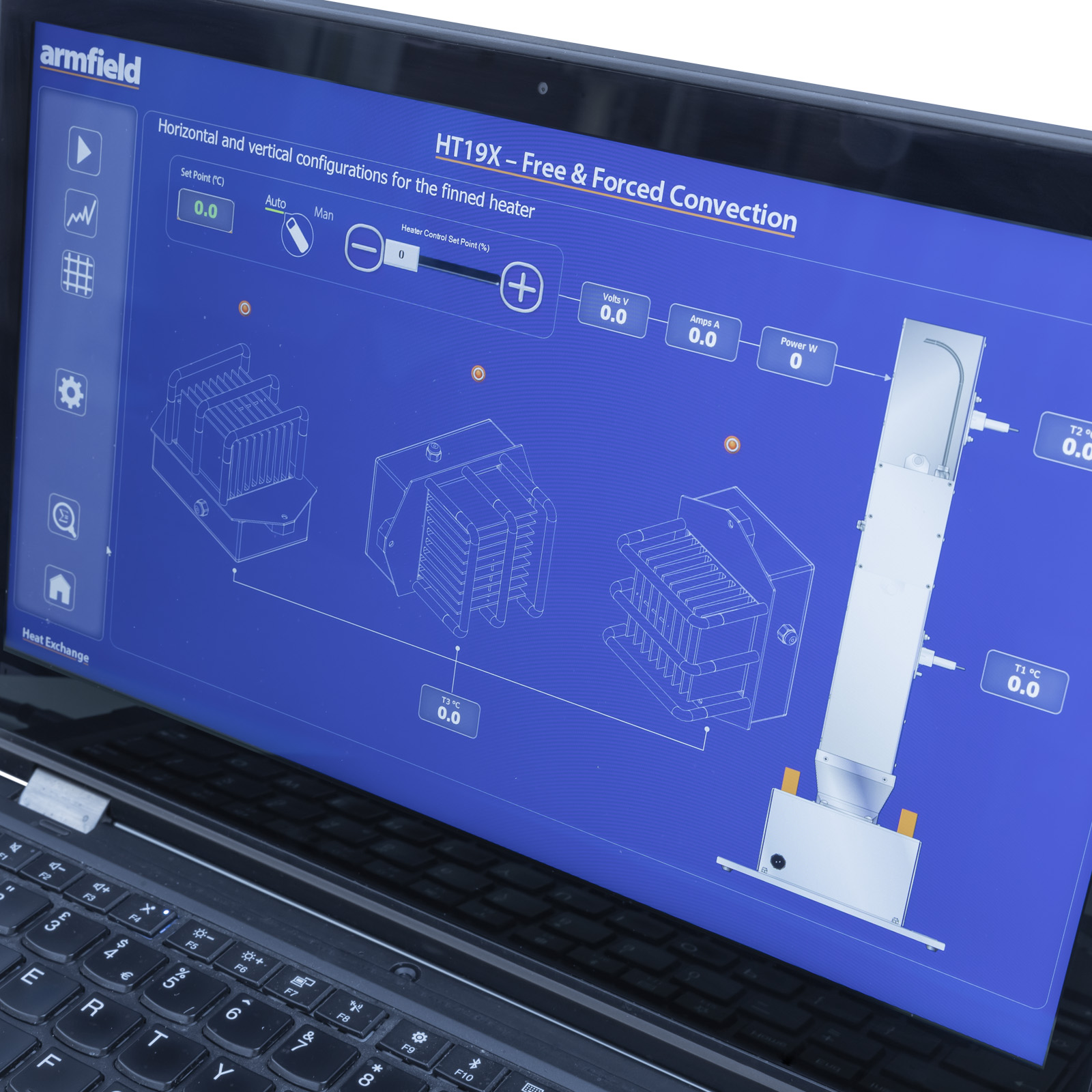HT19X – Free and Forced Convection
The Armfield Free and Forced Convection unit has been specifically designed to demonstrate the phenomena of natural (free) and forced convection.
Description
The Armfield Free and Forced Convection unit has been specifically designed to demonstrate the phenomena of natural (free) and forced convection. Temperature profiles and heat flux over three different heat transfer surfaces can be easily studied.
The HT19X is designed for use with the Armfield HT10X Heat Transfer Service Unit.
This unit consists of a bench mounted vertical air duct positioned on the top of a centrifugal fan. The air duct incorporates an aperture positioned at the rear wall of the duct, into which three different types of heat-transfer surfaces can be inserted. The three types of heat exchangers supplied are; flat plate, cylindrical pins and finned surface.
Incorporating an electrical heating element, with positive thermal cut-out, and thermocouples for precise temperature measurement. The clamping mechanism ensures accurate alignment of the surface inside the duct. The front wall of the duct is acrylic to allow viewing of the heated surface and measurement sensors.
For forced convection, the centrifugal fan draws ambient air upward through a flow straightener and over the heated surface. A manually variable throttle controls the air flow.
An air-velocity sensor measures the air velocity inside the duct upstream of the heat exchanger.
Thermocouples measure the air temperature before and after the heated surface, together with the surface temperature at three positions along the extended surface exchangers.
Technical Specifications
Features & Benefits
- Relationship between surface temperature and power input in free convection
- Relationship between surface temperature and power input in forced convection
- Understanding of the use of extended surfaces to improve heat transfer from the surface
- Determining the temperature distribution along an extended surface
- Comparing characteristics of a vertical and horizontal flat plate in free convection
- Determining the characteristic velocity, the Reynolds, Grashof and Rayleigh numbers for a flat plate in free convection
- Calculation of the average heat-transfer coefficient of the pinned heater in forced convection
- Comparing horizontal and vertical configurations for a finned exchanger in free convection
- A bench mounted unit specifically designed to demonstrate the phenomena of free and forced convection and to measure temperature profiles from three different heat transfer surfaces
- Comprises a vertical air duct, with a transparent front for visibility mounted on a fan at the base of the duct, three heat transfer surfaces, air flow, and temperature probes
- Technical data is included for each of the three heat transfer surfaces, which will enable students and researchers to compare practical results with theoretical analysis for free and forced convection
- Three heat transfer surfaces supplied: a flat plate surface area 0.011m2, pinned extended surface area 0.0525m2, and finned extended surface area 0.1414m2
- Vertical duct incorporates a transparent front wall allowing complete visualisation of the process and identification of the air flow and temperature sensors
- Each heat transfer surface is fitted with its own heater (240W) and thermocouples, to enable easy interchange
- All heat transfer surfaces incorporate guards to permit safe use outside of the duct for performing free convection experiments
- ArmBUS software includes separate exercises for each of the heat transfer surfaces in free or forced convection and records of all measured variables for analysis and comparison of the performances
- K-type thermocouples measure the air temperature in the duct before and after the heater, as well as the surface temperature of the heat transfer surfaces
- Heater can be voltage or PID controlled allowing for the temperature set-point to be achieved rapidly and maintained within 0.1°C
- The air flow is measured by an air-velocity sensor, which is inserted inside the duct
- Mounted on a PVC baseplate which is designed to stand on the Heat Transfer Service Unit with simple plug-in connections
- A comprehensive instruction manual is included
A full armBus educational software suite is provided with the HT10X for all the Armfield heat transfer accessories.
Individual experiment interfaces and displayed data types vary to match selected experiment accessories, common examples are listed below:
- Temperatures and other signals such as flow rates, heater voltage and current are displayed on a diagrammatic representation of the equipment
- Control outputs are operated by a control slider or typing in a value between 0 and 100%. Sensor values are read directly in engineering units
- PID automatic control option is available, permitting the temperature set-point to be achieved quickly and precisely, coping with disturbance rejection
- A maintenance screen allows for PID parameter adjustment and thermocouple calibration
- Data from the sensors are logged into a spreadsheet format, with operator control over the sampling intervals (or ‘single-shot’)
- Sophisticated graph-plotting facilities are provided, including plotting of both measured and calculated values
- Graphs update in real-time as the samples are being taken
- Processing of measured values to obtain calculated values is linked to the questions and answers to ensure student understanding
- Experiment data samples are saved, or exported in Microsoft Excel format
- Real-time sensor data is displayed independently from the data logging. It is possible to check the recent history graphical display to inspect the temperature stability prior to taking a sample

All electrical requirements are obtained from the service unit
Volume: 0.2m³
Gross Weight: 24kg
Length: 0.35m
Width: 0.30m
Height: 0.95m
HT19X




